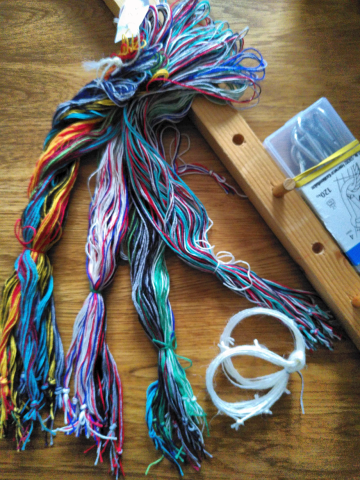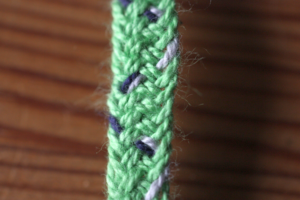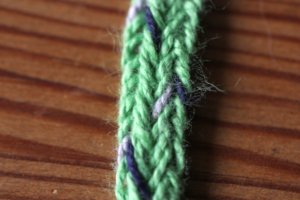It's one thing done, the next thing in prep - I've just finished sorting and putting away all the tools and extra bits and bobs that went with me to the tablet weaving workshop. Apart from those bits and bobs of the collection that are going to travel to Lübeck with me!
The loops for the braiding workshop are all cut, knotted, and bundled together for the different braids; there's material to anchor them, there's extra yarn and my trusty measuring and loop-making tool, there's scissors and loops and all that remains is to print out the things that have to be printed out, and to pick and pack some of the sample bands so people can get an idea of what is possible with loop braiding. Like in all my workshops, I try to teach "understanding the structure" as opposed to "follow this set of instructions blindly to get result A, and this set of instructions to get result B". So we start with five loops, and every loop in a different colour - this makes later analysis easier, as you can follow each of the colours through the band. Or bands, depending if you are braiding one or two at the same time.
The biggest part of the equipment are the clamps I use to anchor the braids - but fortunately, the trusty suitcase has no problem to fit them, and it rolls so well that it's also no trouble to push or pull it around. Only staircases are not my most favourite thing in the world when I'm travelling with workshop equipment... makes you keenly aware of what people with reduced mobility have to face every day.
I'm already looking forward to Lübeck on Saturday and Sunday!







